At CarnivoreWeb.com, we independently review products and outfitters. However, we may earn a commission when you purchase products through links on our site. Read our affiliate policy. Read about how we test products.
Protect the environment from a destructive species and have fun doing it.
When you think of hunting in Africa, your mind might gravitate to ideas of hunting predatory cats, plains game, buffalo, or other large mammals. These animals capture much of the spotlight for their impressive racks, pelts, and skulls. For many, hunting in Africa carries with it bragging rights and an air of prestige. However, there are many hunts in Africa worthy of consideration if you’re looking to get into the field and get some trigger time on fast-moving, elusive, and prolific prey — the warthog. While not as majestic as some of the other creatures that roam the continent, warthog hunting provides an excellent source of excitement, challenge, and an opportunity to cover ground in a foreign land. You just need to be prepared for what you can expect before entering the bush.
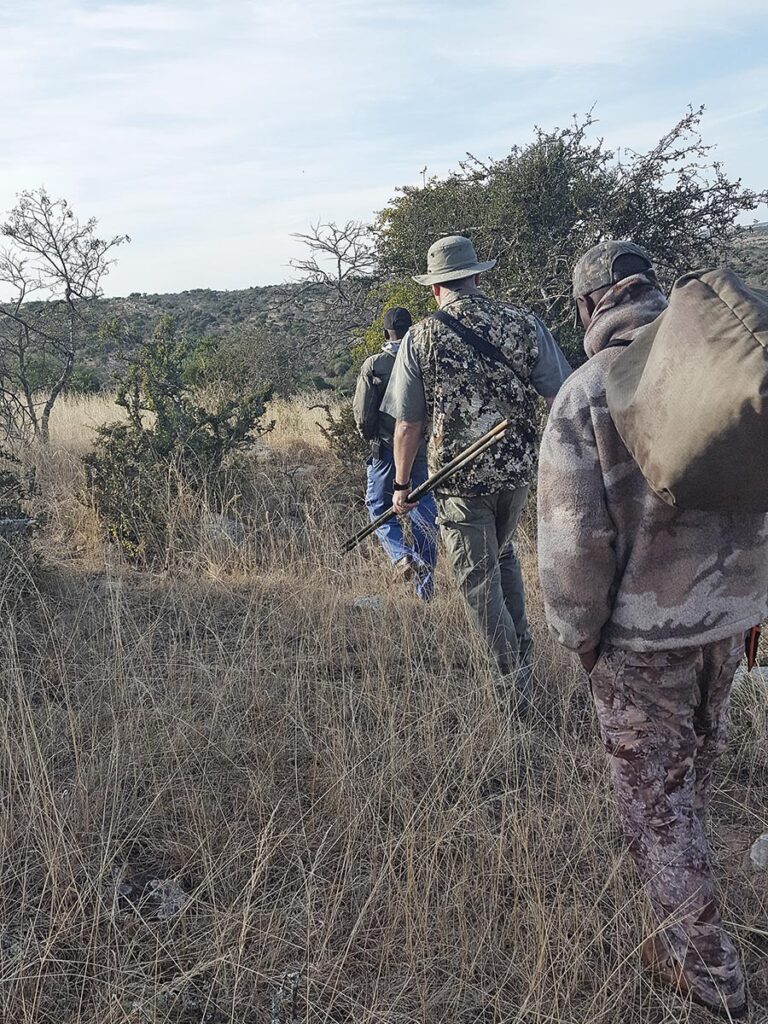
Habits and Habitat
Warthogs are in the swine family, and they share many similarities with their North American cousins. Sows can reproduce up to eight offspring at a time and the population of warthogs in Africa is booming. They make great bushmeat, and there’s no shortage of game. Much like the U.S., the warthog population can be a nuisance and cause damage to crops. You know you’re in warthog country when fencing which surrounds fields is forced up, causing holes for them to crawl under.
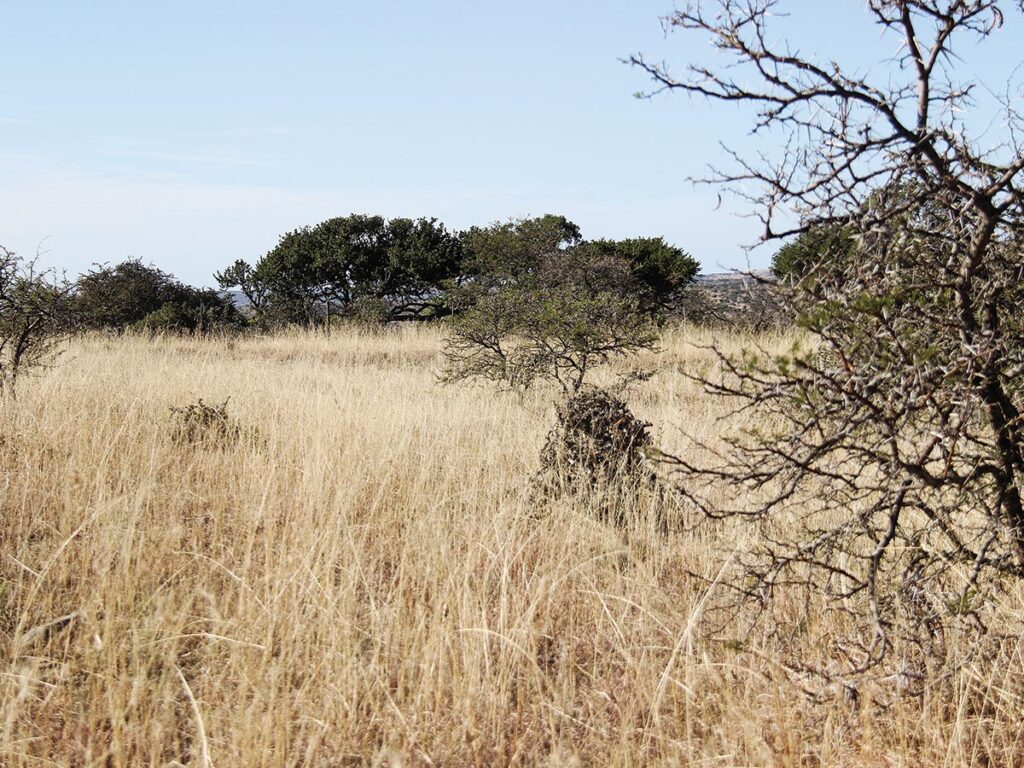
Warthogs get their name for the warts they have on their face. They have a top set of tusks used for digging food from the ground (a warthog’s diet is primarily plant-based). Their bottom set is used for fighting and for defense. When both sets rub together, the bottom set becomes sharpened.
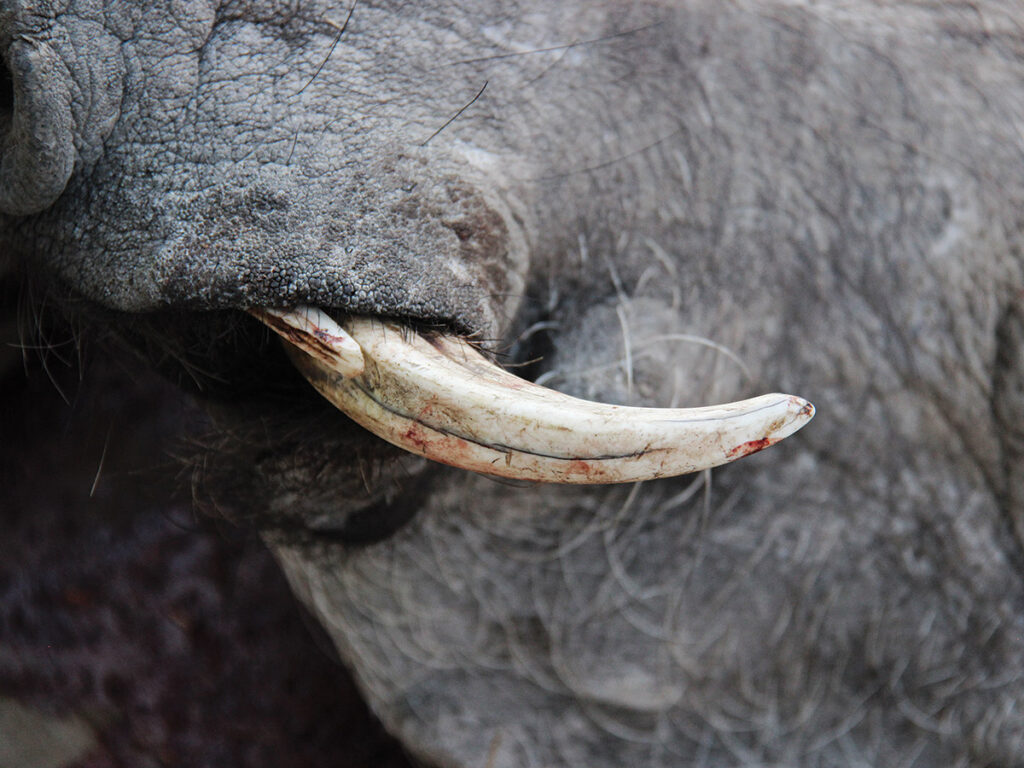
Warthogs have keen senses; when you see their tail stop swinging, you can be certain they’re sizing up their environment, carefully observing and sniffing the air for predators. They stop chewing and listen. Scent matters, but their vision is what will give you away more. When their tail resumes swinging, you can move cautiously to them. They tend to go underground in cold weather — their burrows are another source of annoyance for farmers — and aren’t very active when it rains. Big boars are usually alone, and if you see a smaller group of hogs, you can bet on more being nearby. Assuming they notice you or get spooked and run, they don’t run far before they stop and reassess. It’s at that time when you can take a follow-up shot or stalk closer.
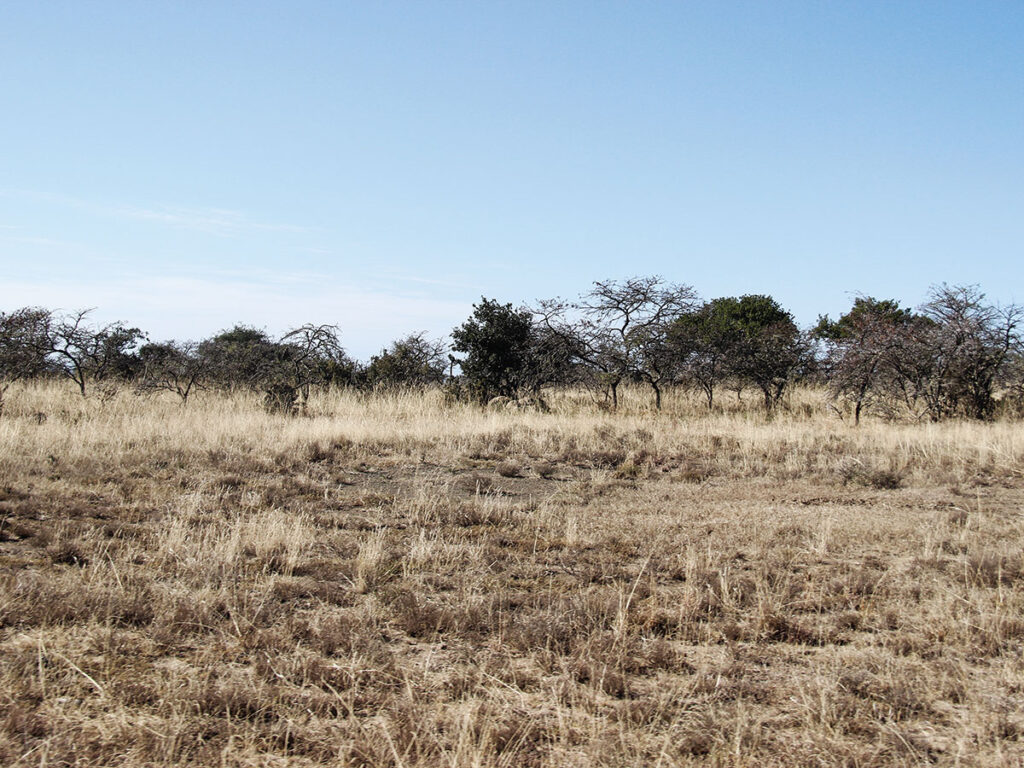
The hunt we participated in took place on a private farm about 45 minutes outside of Grahamstown, South Africa. Farmers communicate with the professional hunters and relay information about invasive hogs and opportunities to cull them. The landscape will vary, but one constant is true: Warthogs like grassy areas and mud. The perceived color of the warthogs you locate will be dependent on what they wallow in. They won’t be found near stagnant water, but they will near clear water with distinct adjacent muddy areas.
Always Changing
Each warthog hunted presented a different scenario and set of circumstances to deal with. For example, on one particular day of hunting, the author was able to kill six warthogs, all of which made for some delicious table fare. In the mid-morning, the hunt took place across rolling hills with rocky terrain and short acacia trees. From one hillside to the next, our professional hunter, Russ Field, spotted two warthogs at 240 yards. The author was instructed to set up his rifle and prepare to take a shot when they stopped walking.
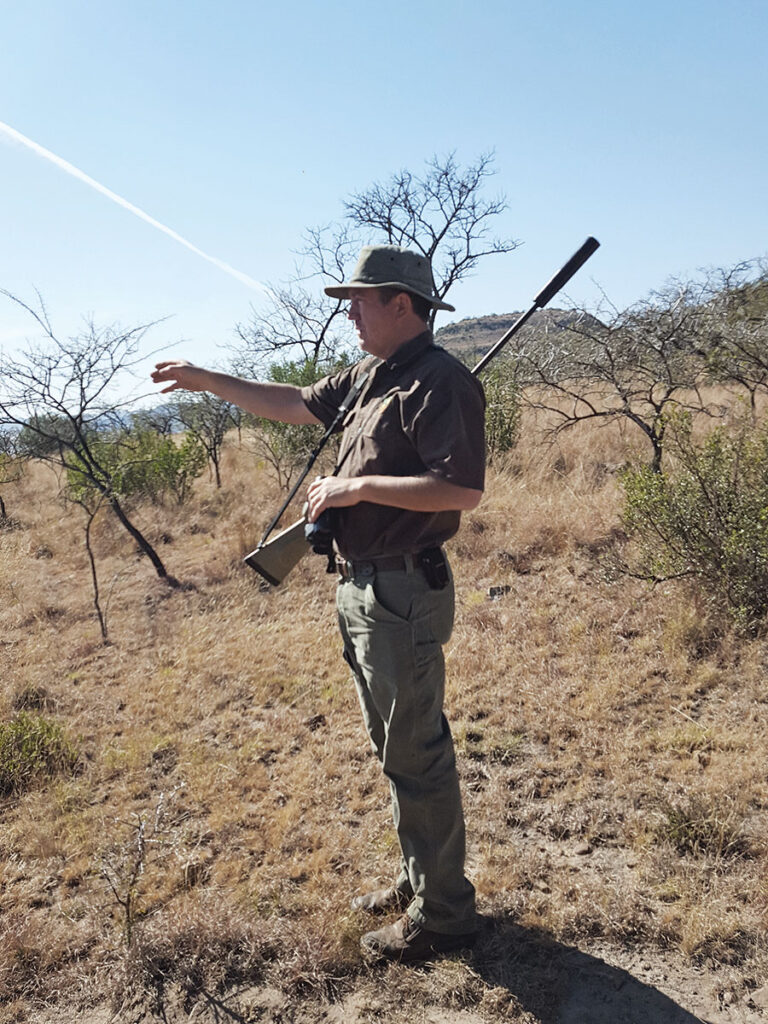
When they did, they were broadside stacked in-line with each other. The 300 Winchester Magnum Robar Precision Hunter rifle topped with a Schmidt Bender 2-12x50mm Zenith optic was ideal for the shot, and the author hit the pig just behind the front leg slightly low. The second pig ran to 270 yards, stopped, and was shot dead in its tracks. With both pigs down, our hunting party tracked the blood trail and found the second one where it was thought to be, while the first was discovered by Raisin, our hunting dog. After Raisin ripped the testicles off of the first, it ran on pure adrenaline bleeding out and was stopped by a fence line, where it was finished off before it could harm the dog.
Throughout the day, the terrain varied in gradient, grass, low brush cover, and other terrain features. The third warthog the author took was trotting through a field at about 75 yards and was shot off hand after another member of his hunting party shot one from shooting sticks. The fourth warthog taken by the author was shot from the top of the Toyota Hilux across a small culvert near a watering hole. Unless you’re borrowing a suppressed rifle, the report from your rifle will definitely make others in your group seek out foam ear plugs. Those in the cab and riding in the bed of the truck flinched each time the author cracked a round off.
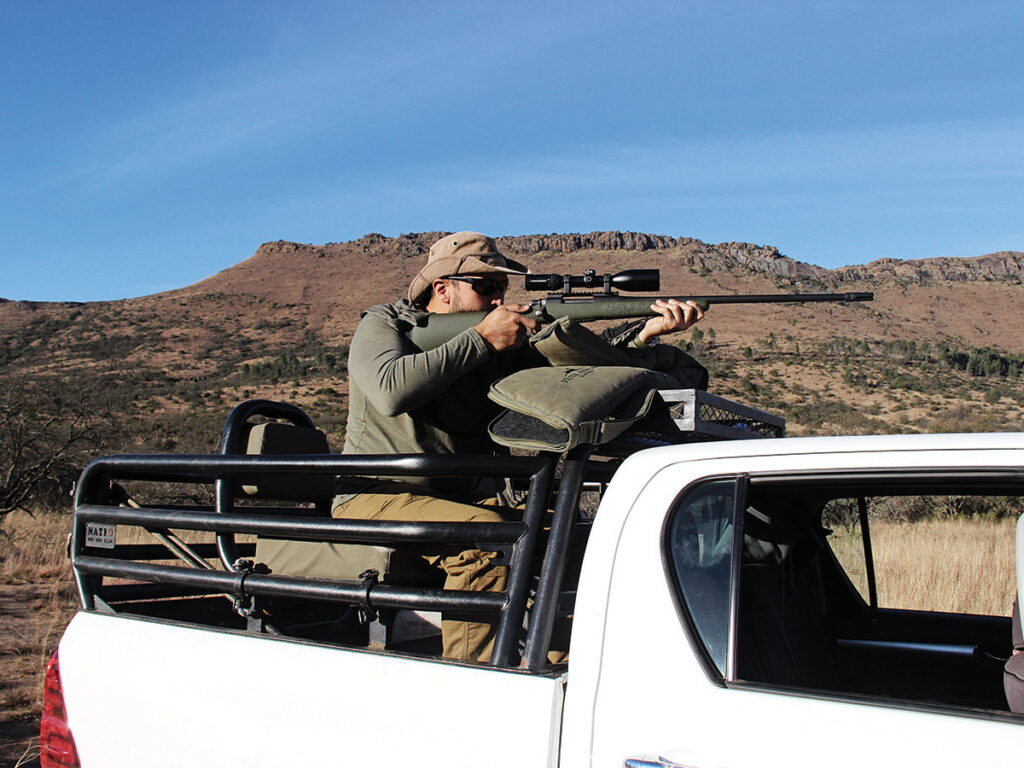
Just before we left the truck to load the author’s fourth warthog, the remaining hogs running with it made their way back onto the road about 50 yards in front the truck. The author and the other hunter seated on the safari truck bed seats took aim and fired simultaneously from the roof hitting the warthog with both shots. Warthogs four and 4.5 (can’t claim it as a whole hog for either hunter) were loaded up and brought to the skinning shack right before breaking for a lunch of biltong, sandwiches, ginger beer, and other easily packed foodstuffs. There wasn’t a rush to get back to hunting; warthogs aren’t as active around high noon. As Field stated, “Any self-respecting animal beds down during the day.” That included us, and we all took a siesta before getting back after it again an hour and a half later.
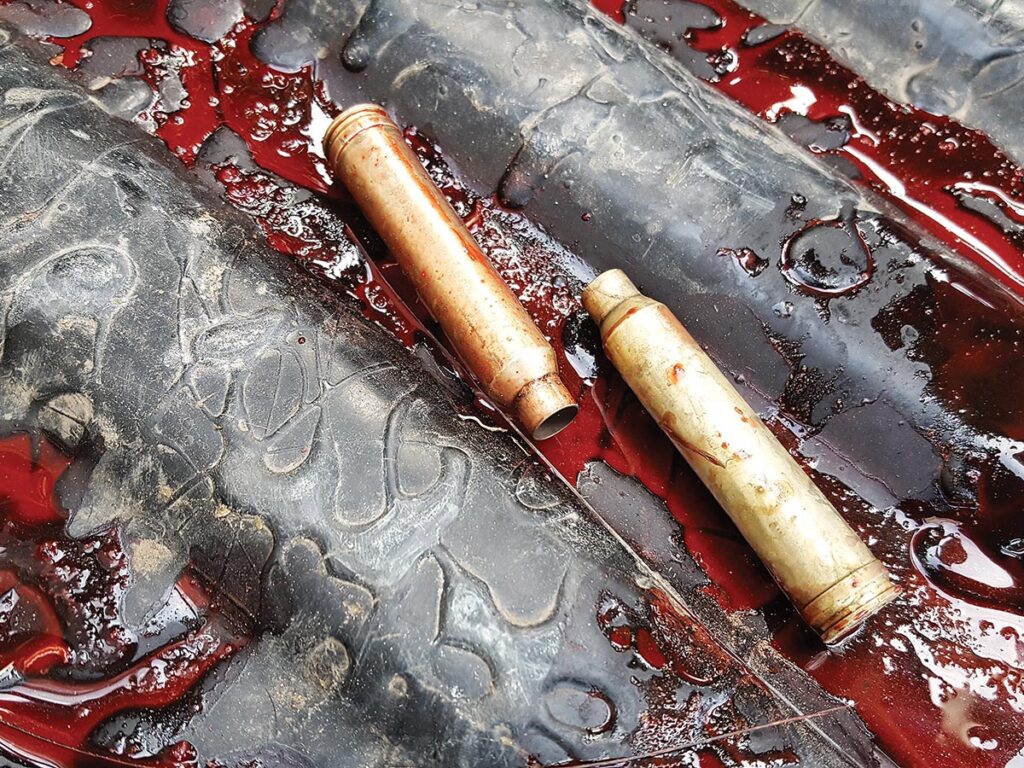
While we ate lunch, the professional skinners made quick work of the pile of warthogs from the morning. These local men are clothed in clearly worn gear showing many days of experience in the field, and they carry knives they won’t hesitate to sharpen on a brick or rock from the nearby field. Gut piles were sorted, and the organ meat was taken home by the local skinners. What many anti-hunters never see is how this meat is used to make stews that will feed many members of the local community assisting in the hunting efforts. These men skinned out the warthogs we brought them, took a break for lunch, and were ready for the rest of the day after we woke from our break.
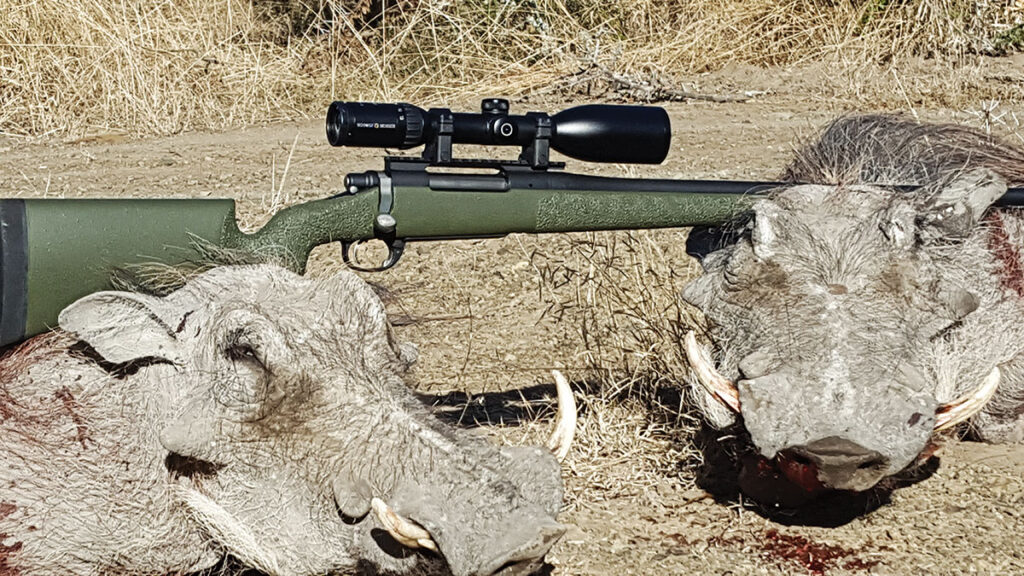
When the midday sun started to relent, we hopped back inside the truck and headed to a new area. Even though it’ll take only a few hours for warthogs to resume their normal activity after hunters disturb it with gunfire, we were told by the skinners and trackers more warthogs could be found on a different part of the property. As we drove through the backroads, the distant rolling hills came closer to view. Long before we could see anything, the trackers tapped on the metal roof of the Hilux to alert Russ they spotted something.
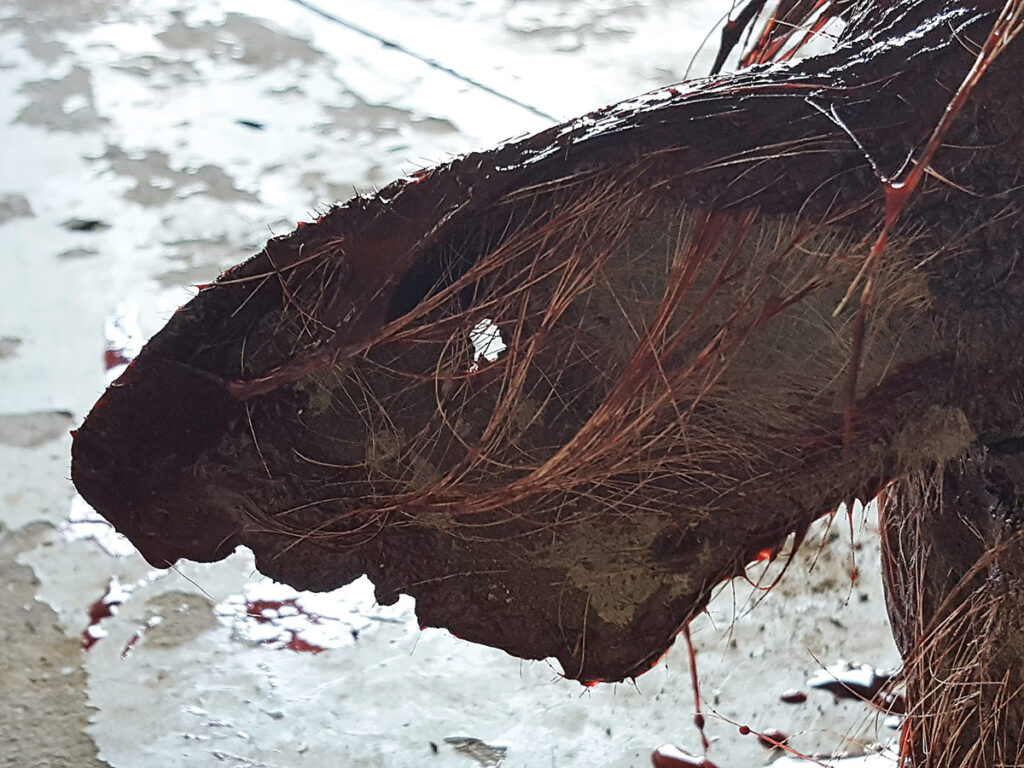
Warthog number five for the author was taken after a stalk to a good shooting position partially concealed by some short brush. Field spread out the shooting sticks and the author supported his rifle atop the leather wrap holding them together. Prone shooting is next to impossible considering the tall grass. The warthog was smaller but a mature female, and the shot available was head-on somewhere between 75 and 100 yards. The Hornady ELD-X bullet impacted just left of center between the eyes, and the pig dropped in its tracks. The piglets with it ran off, and much like American hogs, they were old enough to survive on their own given their size.
The day continued with hunters in our party taking turns pulling the trigger on the warthogs we spotted. At about 3:30 p.m., we were spotting fewer and fewer warthogs and feeling like our luck was changing from the incredible success we had in the a.m. We stalked and warthogs spooked or moved to bad positions for us to take carefully aimed shots. Just when we assumed the day was over, Garrett, our tracker tapped on the roof. He spotted the tuft of hair on the back of a warthog in a distant field through the tall grass. We moved to the perimeter of the field and approached the warthogs from the right and with the wind in our face.
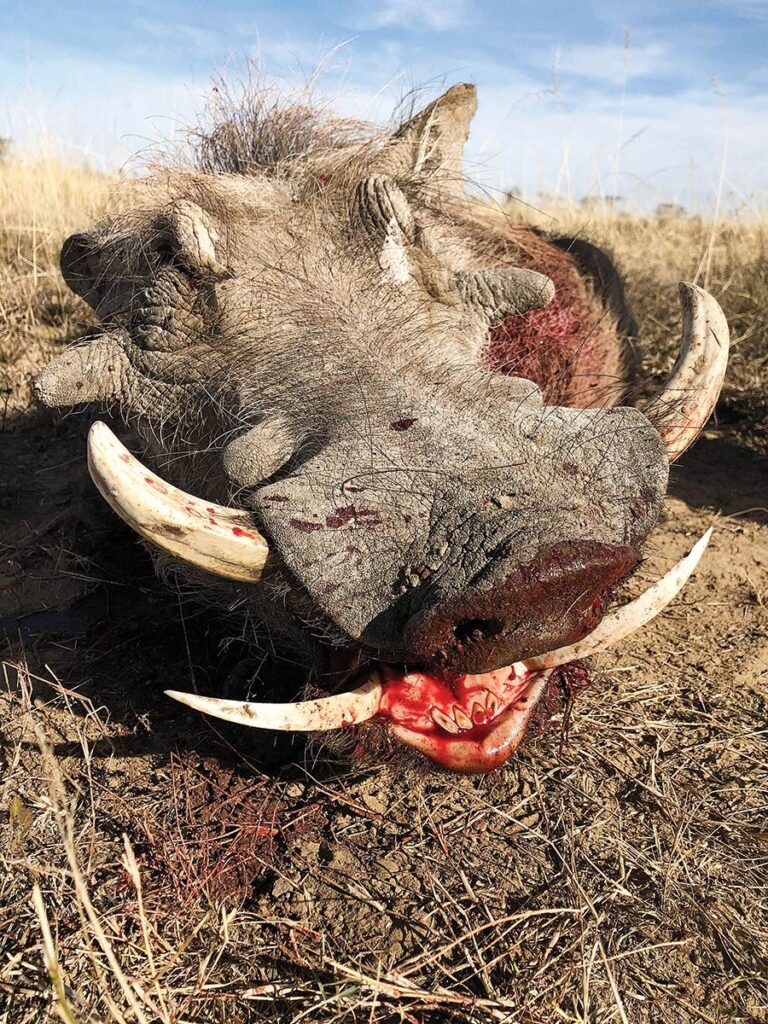
By that time of the day, the wind picked up and was actually moving the trees and brush around us, covering the noise we made. We had two rifles trained on two sets of two hogs and in our excitement to set up, we never communicated who would shoot first. Using the worst display of hand signals, we somewhat didn’t relay the message who would fire first and second. When the other hunter broke his shot, the author was at the wrong point in his breathing cycle and rushed it with his rifle resting on a low-hanging branch. The warthog the author shot at was hit through the ear only as it reacted to the gunfire from the other hunter. It took off running diagonally toward us from left to right. The author repositioned his rifle, trained the duplex reticle just behind the ear, and broke his shot. The hog was hit through the spine, killing it instantly before the front legs gave way and the head plowed into the dirt leaving a dust cloud.
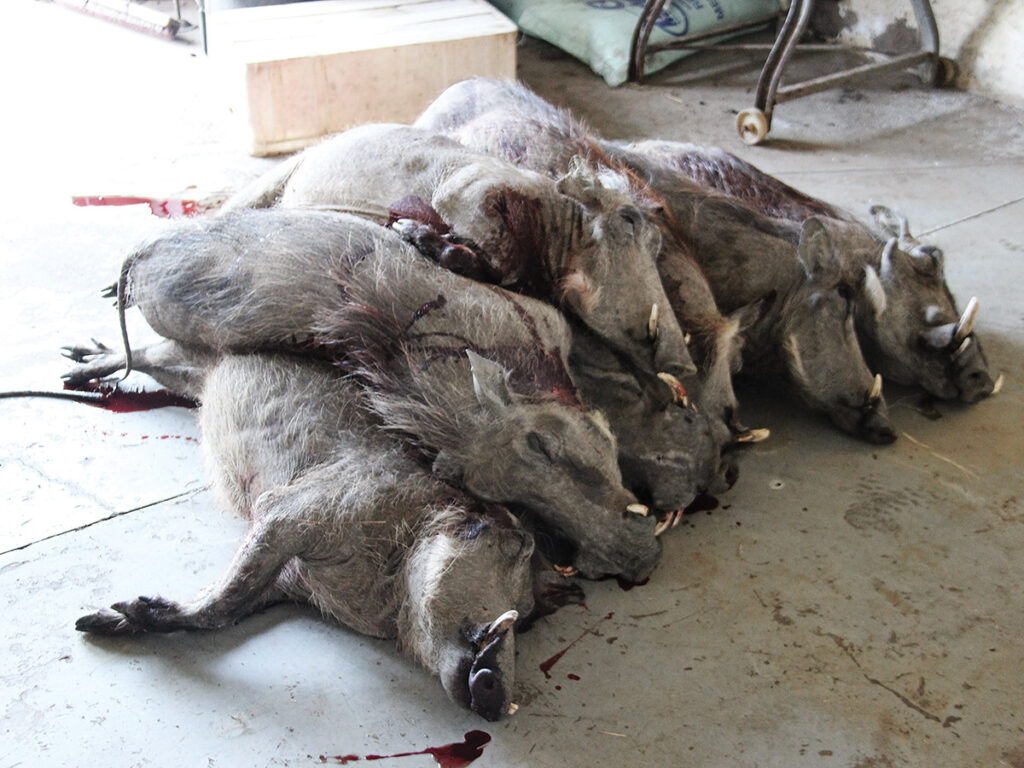
Planning Your Trip
All told, we took 11 warthogs off the property in less than eight hours. The hunt was never stagnant, and even when the pigs were less active in the afternoon, we found ways to entertain ourselves ducking thorned branches as we rode on the back off the truck down the road. The hunt required application of marksmanship and patience. In a foreign land, the idea is present in the back of your mind to get your money’s worth but as a hunter, you need to make sure your shots count and you don’t deliberately or accidentally wound an animal you can’t find and harvest ethically. Compared to American hog hunting, South African warthog hunting packs many different types of hunting experiences in a single day. The differences in the land offers a unique setting that can’t be found in the States.
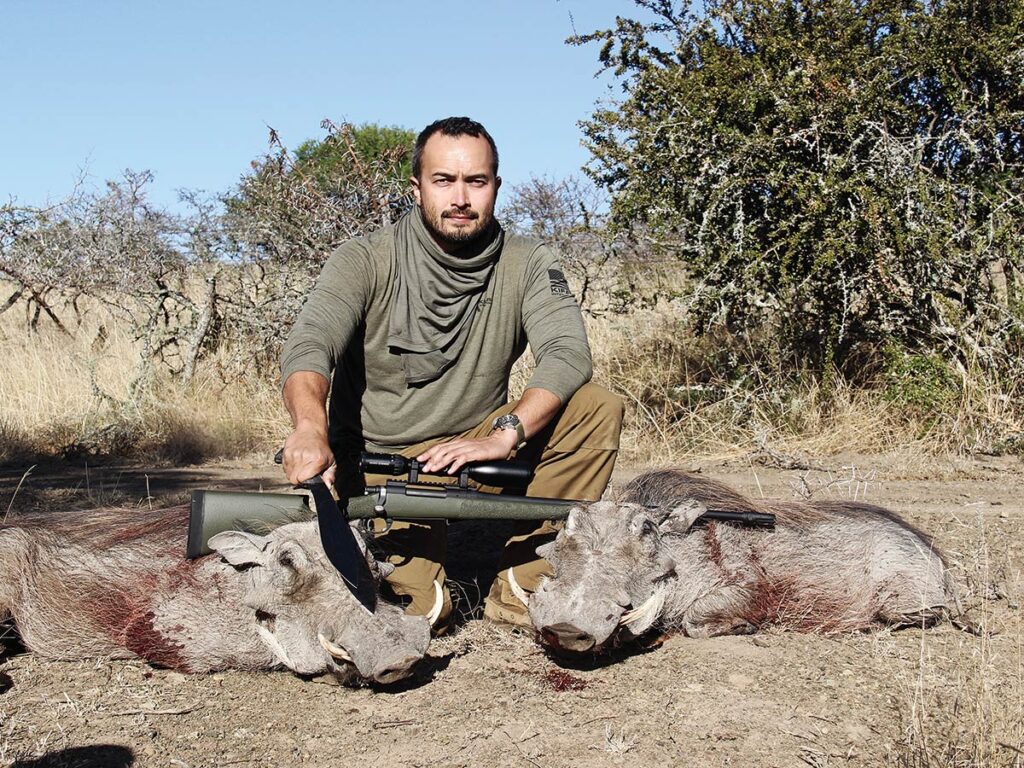
A similar week-long hunt with Russ Field Safaris will cost you $2,000 and $100 for each warthog taken with a minimum of four hunters. This price is all-inclusive, with food, drinks, and accommodations included. The only additional costs are airfare, rifle rental (if not taking your own), and tips. While there are no local hunting laws or restrictions you need to worry about other than the firearms you’re allowed to use for hunting, the professional hunters will help you navigate where to go, help you get on the warthogs, and take care of your needs.
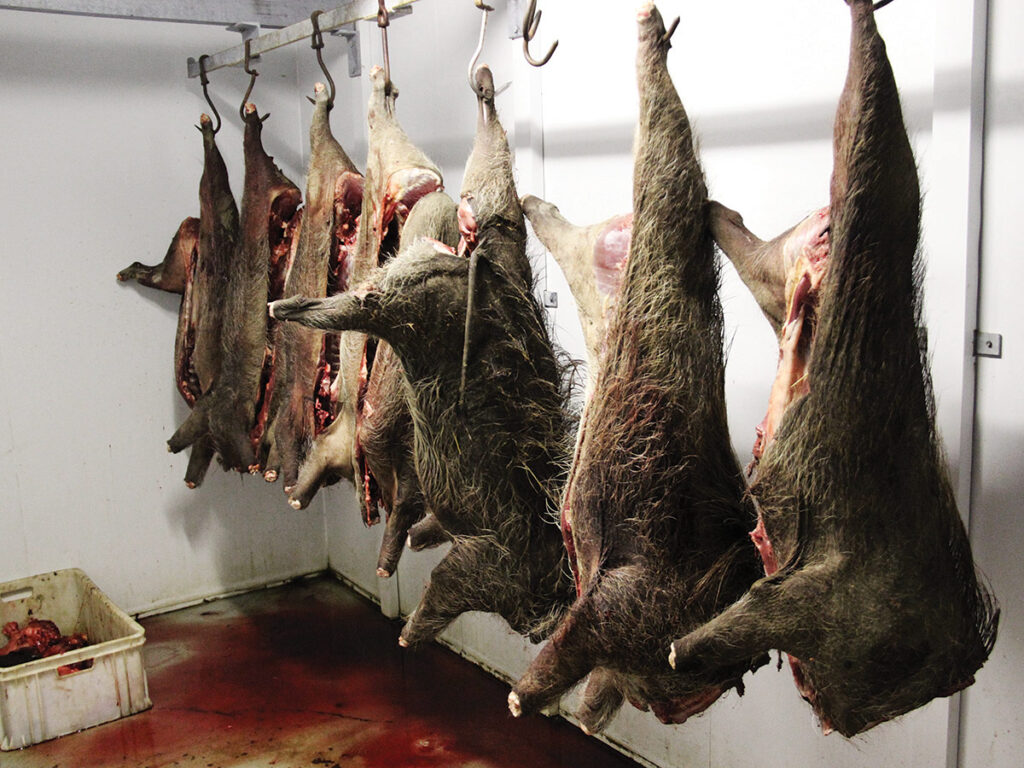
For more information, visit www.russfieldsafaris.com and for booking information, find Primo Adventures LLC online. Primo Adventures has been working with Russ Field Safaris for years and can also assist in getting your rifle overseas, offering guidance in tipping suggestions, and flight selection for free. Of course, there are many guides to choose from and results will vary. Ask around and be an educated hunter before committing to a significant hunting investment. It’s impossible to have the same experience we did, but you can have a similar one you’ll remember for years to come. We saw a photo in the lodge of a warthog cull hunt just months before with over 400 head taken in a single day. The warthog population is booming, and the need to control it will always make hunts like ours possible.
Gear
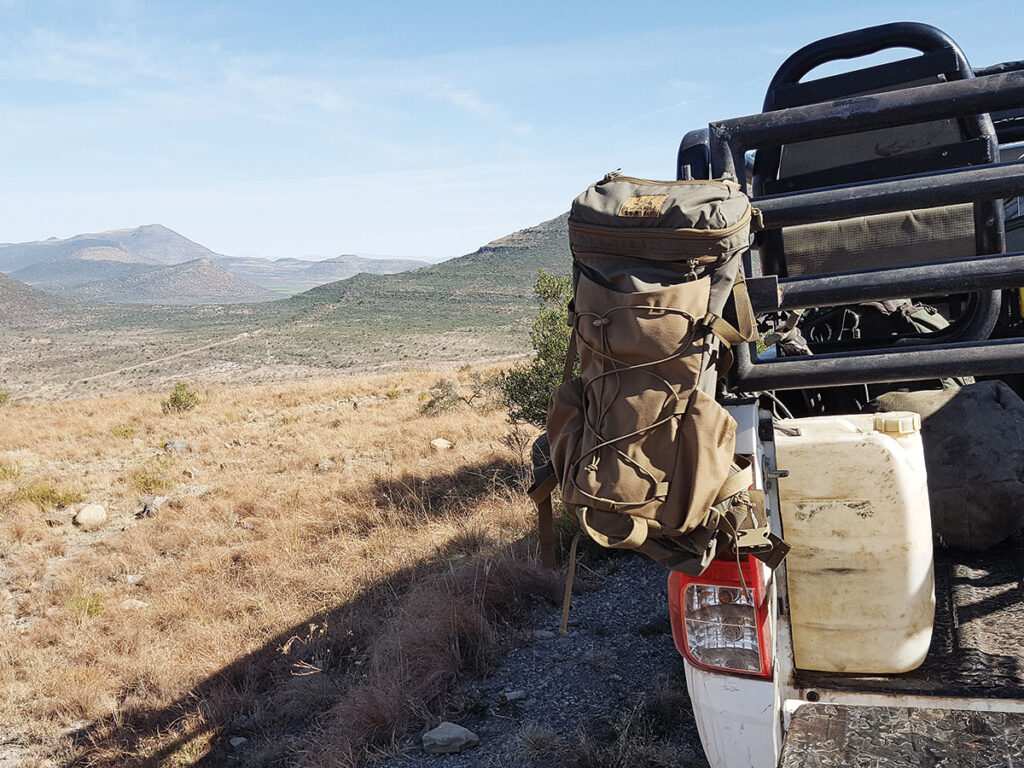
Rifle:
- .30-caliber short or long action in all popular calibers including .308, .30-06, and 300 Win Mag
Optic:
- Lower magnification or red-dot sight with a proper zero
Binoculars:
- Lightweight 8 or 10 power and a comfortable way to carry them
Camera:
- If you’re “doin’ it for the ‘Gram” or just keeping track of memories
Shooting Sticks:
- Shots are rarely taken from the prone position.
Ammunition Pouch:
- It isn’t a bad idea to keep 10 spare rounds in your pocket.
Small Pack:
- To hold biltong, water, lightweight jacket, spare batteries, misc. kit
10 Essentials (keep it light):
- Knife, fire-starter, flashlight, pocket emergency kit, etc.
Gloves:
- Everything in Africa’s backcountry is thorned. Warthogs likely have mites on them, and you’ll be thankful to have a protective layer on your hands.
Clothing:
- Neutral-colored clothing (three sets for hunting and two sets for the lodge); laundry service is daily.
Cash:
- Tips are handed out in dollars, and on side trips to town, the dollar goes extremely far compared to the South African rand.
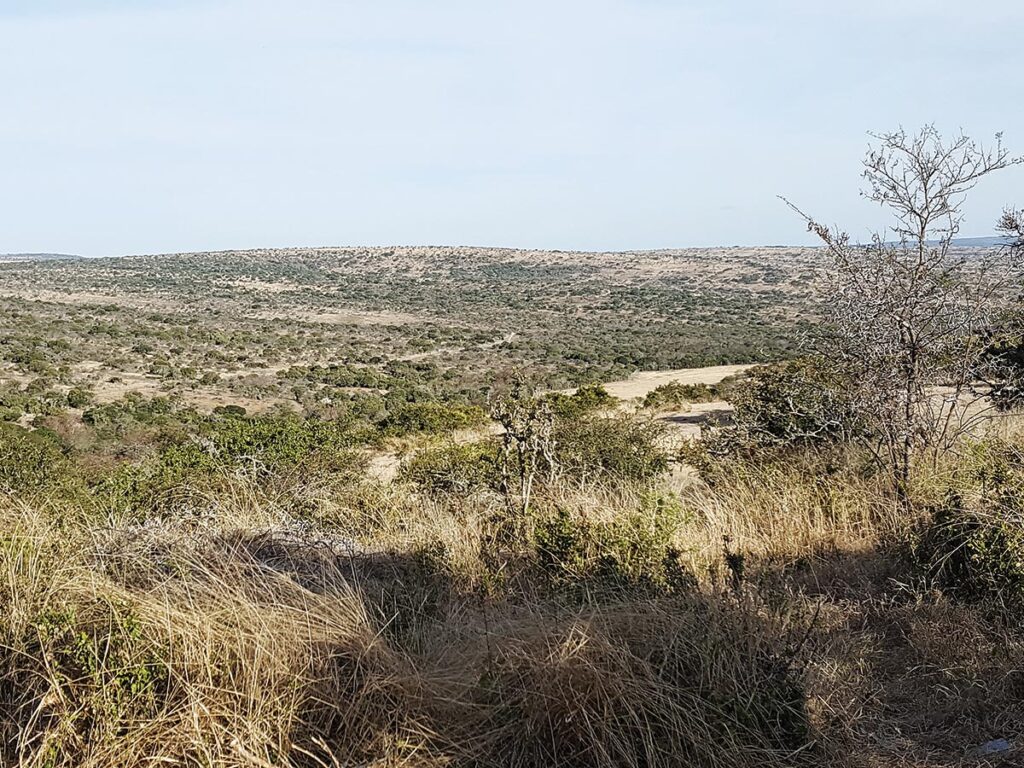
Editor’s Note: This article originally appeared in Carnivore Magazine Issue 3.
Why You Can Trust CARNIVORE
Since its launch, CarnivoreWeb.com has been a trusted authority on hunting, fishing and wild food, delivering expert insight for outdoorsmen who live the field-to-table lifestyle. More than a hunting and fishing site, CarnivoreWeb.com covers the full spectrum of the modern outdoors—from rifles, bows, and fishing gear to cooking, conservation and adventure.
Our contributors are drawn from across the hunting and angling world, including seasoned guides, lifelong hunters, competitive shooters and outdoor writers with decades of field experience. Every review, article and feature is built on firsthand testing, deep research, and an unwavering commitment to accuracy.
Commitment to Journalistic Principles
At CarnivoreWeb.com, upholding journalistic integrity is our top priority. We follow strict editorial standards to ensure all content is accurate, transparent, and unbiased. Our editors and writers operate independently, free from outside influence, advertisers or stakeholders. We adhere to established journalistic codes of ethics, holding ourselves accountable for the information we publish, correcting errors when they occur and disclosing any potential conflicts of interest.
This commitment ensures that our readers can trust CarnivoreWeb.com to provide reliable, honest coverage that helps them make informed decisions—whether selecting gear, honing outdoor skills or preparing wild game.
Find out more about our Editorial Standards and Evaluation Process


